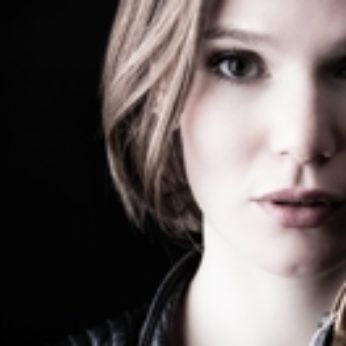Composer: Johann Sebastian Bach (b. 1685 - d. 1750)
Performance date: 02/07/2016
Venue: St. Brendan’s Church
Composition Year: circa 1720
Duration: 00:19:03
Recording Engineer: Richard McCullough, RTÉ lyric fm
Instrumentation: vn
Instrumentation Category:Solo
Artists:
Tamsin Waley-Cohen -
[violin]

Bach’s maturity can be conveniently divided into his three appointments;
as organist from 1708-17 at Duke Wilhelm’s Court at Weimar; as Kapellmeister at
Cöthen from 1717-23 and finally as Kantor at Leipzig for the remainder of his
life. His Leipzig period is often divided into three, the time before1730 when
he undertook the prodigious task of composing a well-regulated church music,
that is a cantata for every Sunday and Feast Day in the church calendar over a
period of five years. This is followed by the period from 1730-42 when he wrote
his extraordinary keyboard exercises, culminating with the Goldberg Variations.
And lastly there is the final phase when he tried to put his publications in
some sort of order and indulged his late obsession with canons and
counterpoint, as in the Musical Offering and the Art of Fugue.
The Sonatas and Partitas for Solo Violin without bass accompaniment date from his time at Cöthen, where his
employer was a music loving Prince, who went to immense trouble and expense to
build up an orchestra of 18 top-class players. During this time he had no
duties as an organist or church musician, so turned to instrumental music,
composing many of his most famous collections – the Brandenburg Concertos, the
first volume of the Well-Tempered
Clavier, the six French Suites, the
two-part and three-part Inventions, six
sonatas for violin and harpsichord, three sonatas for viola da gamba and
harpsichord, the six suites for solo cello and the six works for solo violin.
Each collection comprehensively explores the possibilities of its genre.
Bach explains that his purpose is not only to write good music but also to
provide good material for performers to develop their art and for aspiring
composers to learn the many ways a musical idea (or Invention) can be developed into a piece of music. The six solo
violin pieces make up one of these comprehensive collections.
There was a tradition of unaccompanied violin music in southern Germany
with Biber as its most famous exponent, but it cannot be said that Bach
obtained anything more than the general idea from this tradition. What was
remarkable was a polyphonic composer like Bach writing music for a single
string instrument including both a chaconne and fugues requiring extravagant
multi-stopping. He also creates a continuous melodic line by constructing it
from motifs, which suggest or outline chords, so that the music sounds
harmonic. And when he wants to give the impression of several melodic strands,
he moves from different, sometimes remarkably widely apart, registers within
the phrase. Between these techniques he builds a magnificent body of sound. The
intensity for both player and listener is renowned; the lack of distraction
from other instruments or melodies gives no rest and allows for no lapses of
concentration.
A rhapsodic Grave opens the second Sonata in A
minor. At such a slow tempo, the highly ornamented melody seems to meander at
will, navigating a course of highly contrasting rhythms and decorative
flourishes that release the melodic potential of the minor mode. The overall
free nature of the Grave makes it sound like a prelude to the ensuing movement.
As in all three of the violin sonatas, the second movement, the central point
of the piece, is a fugue. Daunting in both size and complexity, the Fugue
pushes forward relentlessly, creating a dense contrapuntal web. Bach sets the third
movement apart from the others through both an Andante tempo and contrasting
key. The writing is more homophonic here, with a serenely beautiful melody that
provides a needed foil to the harsh energy of the preceding Fugue. A lively,
lighthearted Allegro, rich with rhythmic and melodic variations, returns to A
minor and closes the piece.
Copyright © 2024 West Cork Music. All rights reserved.
Designed and developed by Matrix Internet